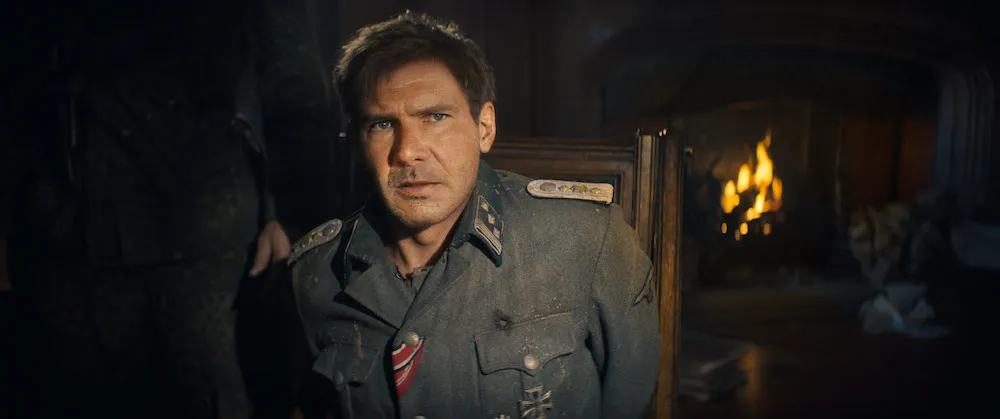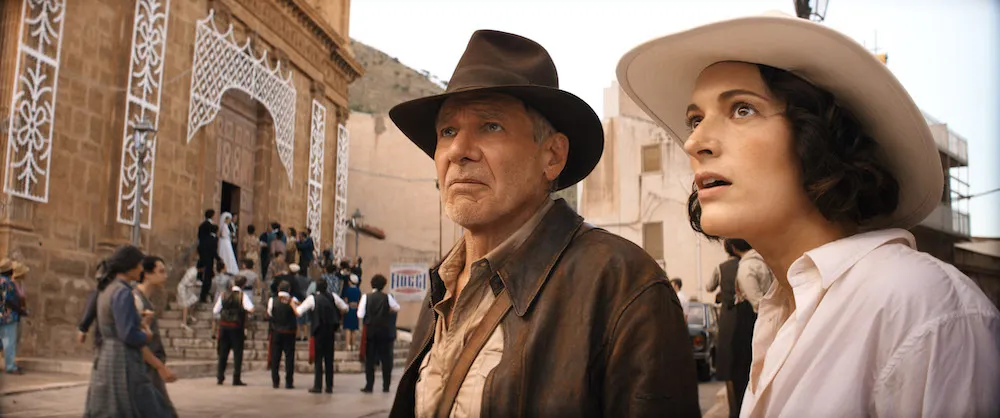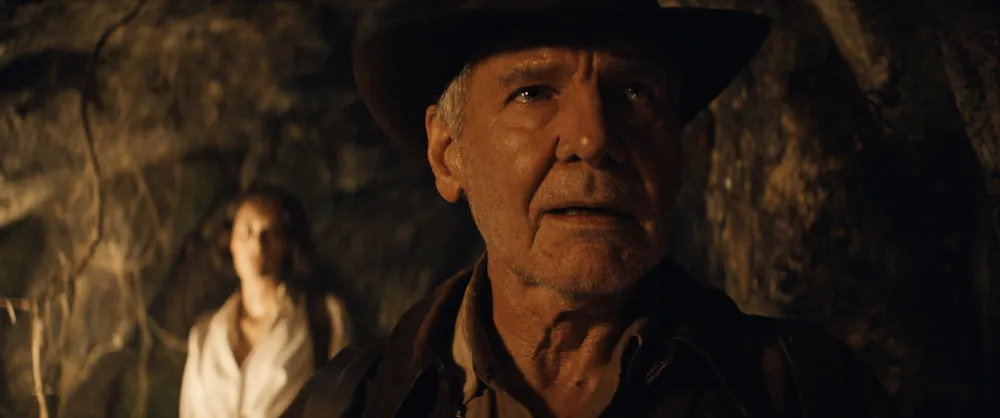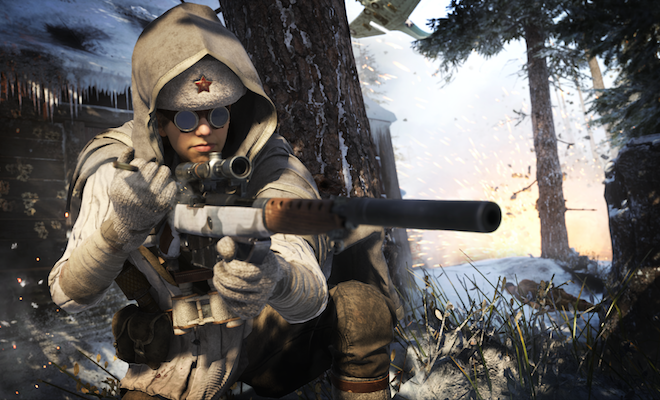It sucks to grow old. I recently turned 50 and certainly feel it every single day. I’m not a globe-trotting adventurer who’s made a career of defying death and punching Nazis, so for archeologist Dr. Henry “Indiana” Jones, Jr. (Harrison Ford), aging out is even worse. That realization sits at the heart of Indiana Jones and the Dial of Destiny, the fifth and final film in the Indiana Jones franchise. Here we find a 70-something Dr. Jones watching as the world turns away from exploring its history and begins to focus solely on the future, and that leaves he himself a relic that quite possibly belongs in a museum. When the opportunity for one more grand adventure presents itself, Indy once again dons the fedora and leather jacket and sets off for locales across the world to ensure that history itself is preserved. And what an incredible adventure it is.
Indiana Jones and the Dial of Destiny opens in 1944 during the last days of World War II. A de-aged Indiana Jones is captured by Nazis as he and his partner, Basil Shaw (Toby Jones, Captain America: The Winter Soldier), seek to keep the famed Lance of Longinus, the spear-tip that pierced Jesus as he hung from the cross on Calvary, out of Hitler’s hands. A Nazi doctor, Jürgen Voller (Mads Mikkelsen, Rogue One: A Star Wars Story), discovers that the lance is fake, but learns that Hitler had one half of the Antikythera, the famed dial of Archimedes, in his collection of stolen artifacts, that if restored with its other half could turn the tide of the war in Germany’s favor. Indy puts a stop to that after a fun battle atop a moving train, and he and Basil return home with the dial half in hand.
We pick up Indy’s story in 1969 New York. The famed adventurer is now in his 70s and is cranky toward the ever-changing world around him — and the counter-culture generation living right next door. With his life in shambles after losing his greatest love and his son, and very soon his job, life in a post-moon landing world seems to have passed him by. The students he teaches are disconnected and apathetic toward history, more excited about the three men who walked on the moon, and where America is going next in the space race than our past.
Indiana Jones is a seriously broken man, physically and emotionally. He doesn’t have much to live for and finds solace in the bottom of a bottle. After holding a lecture on the Siege of Syracuse in 212 BCE that his students don’t care about, his goddaughter, Helena Shaw (Phoebe Waller-Bridge), shows up with notes from her dead father, Basil, indicating the possible location of the Archimedes dial. Unbeknownst to both her and Indy, she, in turn, is being followed by the CIA and hired agents of Dr. Schmidt (Mikkelsen), a former German scientist that defected to help the US reach the moon — and who also happens to be Jürgen Voller, alive and well. This convergence of characters sets Indy and Helena off on one last adventure, as Indy has to find it within himself to once again stop a bunch of Nazis from getting their hands on a powerful relic.
Indiana Jones and the Dial of Destiny takes some pretty big risks. Audiences are used to seeing the character risk life and limb on his many adventures, but in this case , it’s the entire film seeking fortune and glory. Director James Mangold (Logan — the guy has a penchant for “old man” stories) steps in for Steven Spielberg and makes the franchise his own. Sure there are the hallmark wild chase scenes — maybe too many — in each location, and bigger-than-life sets of antiquity, but Mangold keeps the film relatively grounded by focusing on the characters.
Indy seems to get dragged around to each stop on this wild ride, but as the film goes on, he begins to take more of a lead. Those classic adventuring instincts begin to kick in. It’s like watching a dying flower begin to re-sprout, as Indy struggles with the balance of being a man who has given up on life, who now begrudgingly finds his purpose again. Helena is a force of nature, and Indy also has to deal with the fact that she’s not her father’s daughter — a student of history — but more of an “opportunist of history.” She’s not in the relic business to preserve them, but to sell them to the highest bidder. In a way, Helena is more akin to Rene Belloq in Raiders of the Lost Ark than either her father or her godfather — and Indy cannot reconcile that in his mind. This leads to plenty of confrontations between the two characters, but as Indiana Jones and the Dial of Destiny goes on, even Helena begins to evolve.
Mangold, who also co-wrote the script with Jez and John-Henry Butterworth and David Koepp, doesn’t push the Saturday afternoon serial speed of the previous films, and instead opts to let his characters develop. Mikkelsen’s Voller is easily the best villain from any of the films in the series, in part because the audience has time to get to know him and his motivations, as dark as they are. Indy himself is different than when we last saw him in 2008’s Kingdom of the Crystal Skull. In that film, he’s still an active adventurer of sorts. Not so here, as his life consists of one lecture after another at the local college, and then plenty of scotch.
The life of adventuring is well in his past, which is a far cry from any of the previous times we’ve seen him. You feel his despair at aging out of life, and one scene late in the second act, when discussing with Helena what he would do if they find the dial, is absolutely heartbreaking. Harrison Ford completely sold the scene and made it real — possibly the most real thing to ever happen in these films. And it was that scene amongst all that sealed my love for this film. And I’m not even mentioning another confrontation in the late third act with Helena that had equal gravity — and effect — that also broke my heart, for other, more academic reasons.
Ford, Mikkelsen and Waller-Bridge carry the film with their performances, but the cast is rounded out with Boyd Holbrook (The Cursed, The Sandman) as Klaber, one of Voller’s hired goons, and Ethann Isidore as Teddy, an orphan that Helena befriends and takes on her schemes. Yes, Helena has her own version of Short Round. John Rhys-Davies returns as Sallah and Antonio Banderas has a small part as Indy’s old friend, Renaldo.
It wouldn’t be an Indiana Jones film without John Williams’ iconic score, and once again the maestro delivers. After the film, I sat and watched the credits, not because I was hoping for an extra scene, but just to hear the wonderful music. There’s even some contemporary songs on the soundtrack that help sell the time period. Mangold also sparingly uses the classic Ben Burtt “gunshot punch” sound effect, which was simply overused in Kingdom of the Crystal Skull, almost to absurdity.
Indiana Jones and the Dial of Destiny is not without issues. The de-aged Indy in the 20-minute opening looks fine, but when 79-year-old Harrison Ford’s voice comes out of that mouth, it’s a little jarring. In addition, the need for Indy to stop whatever he’s doing to slip into his iconic adventuring gear, including white button-up shirt, leather jacket, and signature fedora, seemed silly. Maybe it was an edict from the studio to help sell toys, but Mangold tried to keep this story grounded in reality — well, until the very end — so seeing our hero stop the action to get dressed caused my eyes to roll.
There are many fans that have questioned the need of another Indiana Jones film after Kingdom of the Crystal Skull, and I was one of them. But I am now very glad that we did get one more look into the life of Dr. Henry Jones, Jr., and get the chance to go on one more adventure. If Kingdom served as a fitting end for the character, Dial is the coda. James Mangold did something I didn’t think possible, and showed us another side of the character that we have never seen and could never have imagined. Yes, getting old sucks, and as we get older and life gets faster, the desire to just sit on the sidelines is very real. Films like Indiana Jones and the Dial of Destiny help show that there might be some gas left in the tank, and that life is worth living, as you never know what you might find at the next stop on your own adventure. You just might find what you’ve been looking for all along.
Indiana Jones and the Dial of Destiny is rated PG-13 and is in theaters now.






